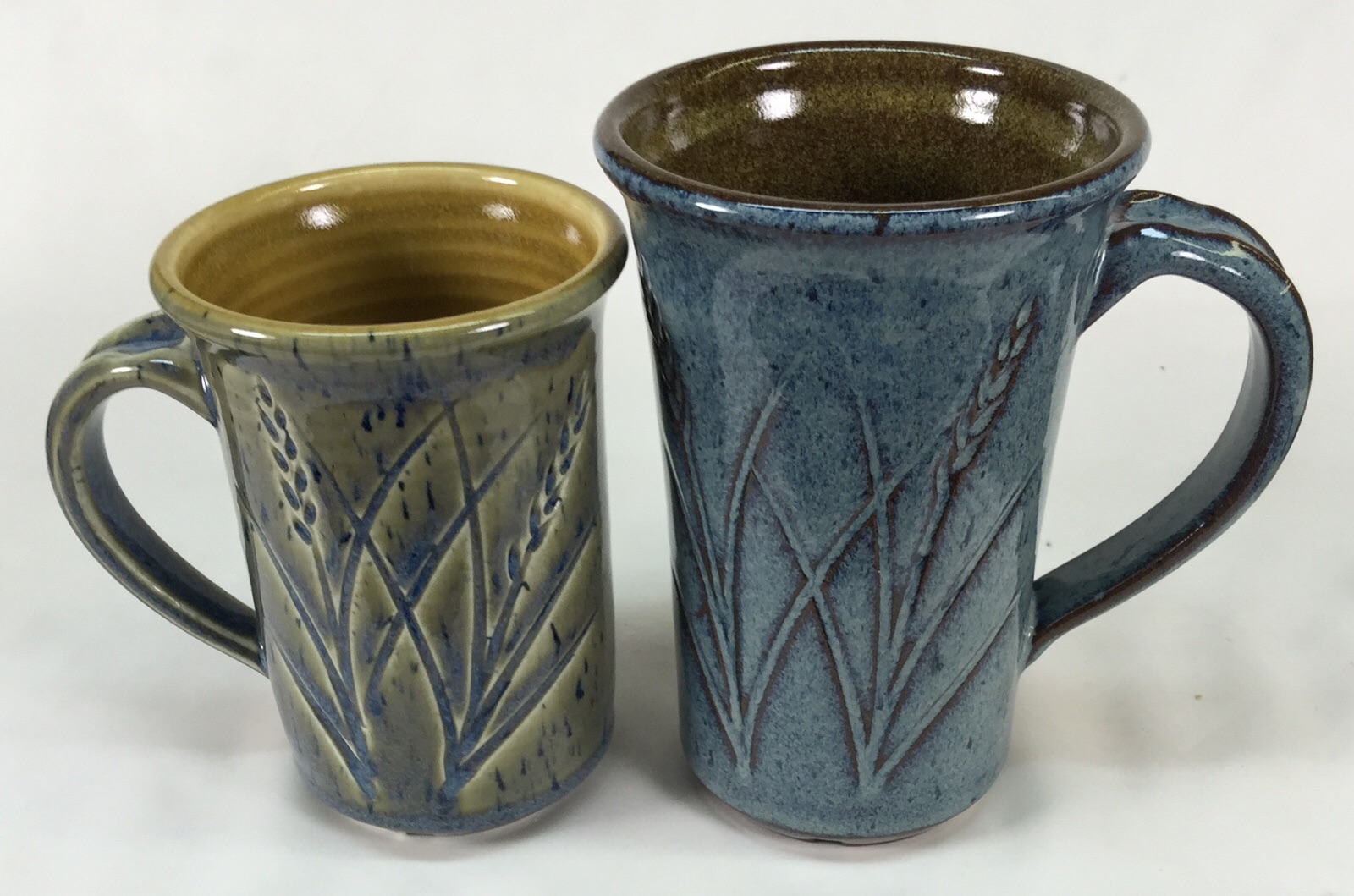| Monthly Tech-Tip | No tracking! No ads! |
Ravenscrag Cone 6 Floating Blue on porcelain and a red stoneware
The insides are GA6-A Alberta Slip cone 6 base. Outsides are Ravenscrag Floating Blue GR6-M. The firing was soaked at cone 6, dropped 100F, soaked again for half and hour then cooled at 108F/hr until 1400F. The speckles on the porcelain blue glaze are due to agglomerated cobalt oxide (done by mixing cobalt with a little bentonite, drying and pulverizing it into approx 20 mesh size and then adding that to the glaze slurry).
Related Pictures
PC-20 floating blue with two alternatives you can make yourself

This picture has its own page with more detail, click here to see it.
These are GA6-C Alberta Slip floating blue (left), AMACO Potter's Choice PC-20 Blue Rutile (center), GR6-M Ravenscrag floating blue (right). The clay is M390. The firing is cone 6, the schedule is C6DHSC (drop-and-hold, slow cool). All of these recipes are descendants and improvements of the 50-year-old original G2826R floating blue. The inside glaze on these mugs is GA6-B. The two on the left develop the blue color because of the slow cool, the one on the right works on fast-cool (because it contains cobalt). Remember, floating blue is a rutile blue glaze, as such it works best on dark-burning bodies.
Videos
Links
| Recipes |
GR6-M - Ravenscrag Cone 6 Floating Blue
Plainsman Cone 6 Ravenscrag Slip based version of the popular floating blue recipe. |
| Materials |
Cobalt Oxide
|
| Typecodes |
Floating Blue
A popular cone 6 glaze that employed Gerstley Borate, it was very troublesome to use and to fire. Much work has been done to create alternative recipes. |
Got a Question?
Buy me a coffee and we can talk

https://digitalfire.com, All Rights Reserved
Privacy Policy

